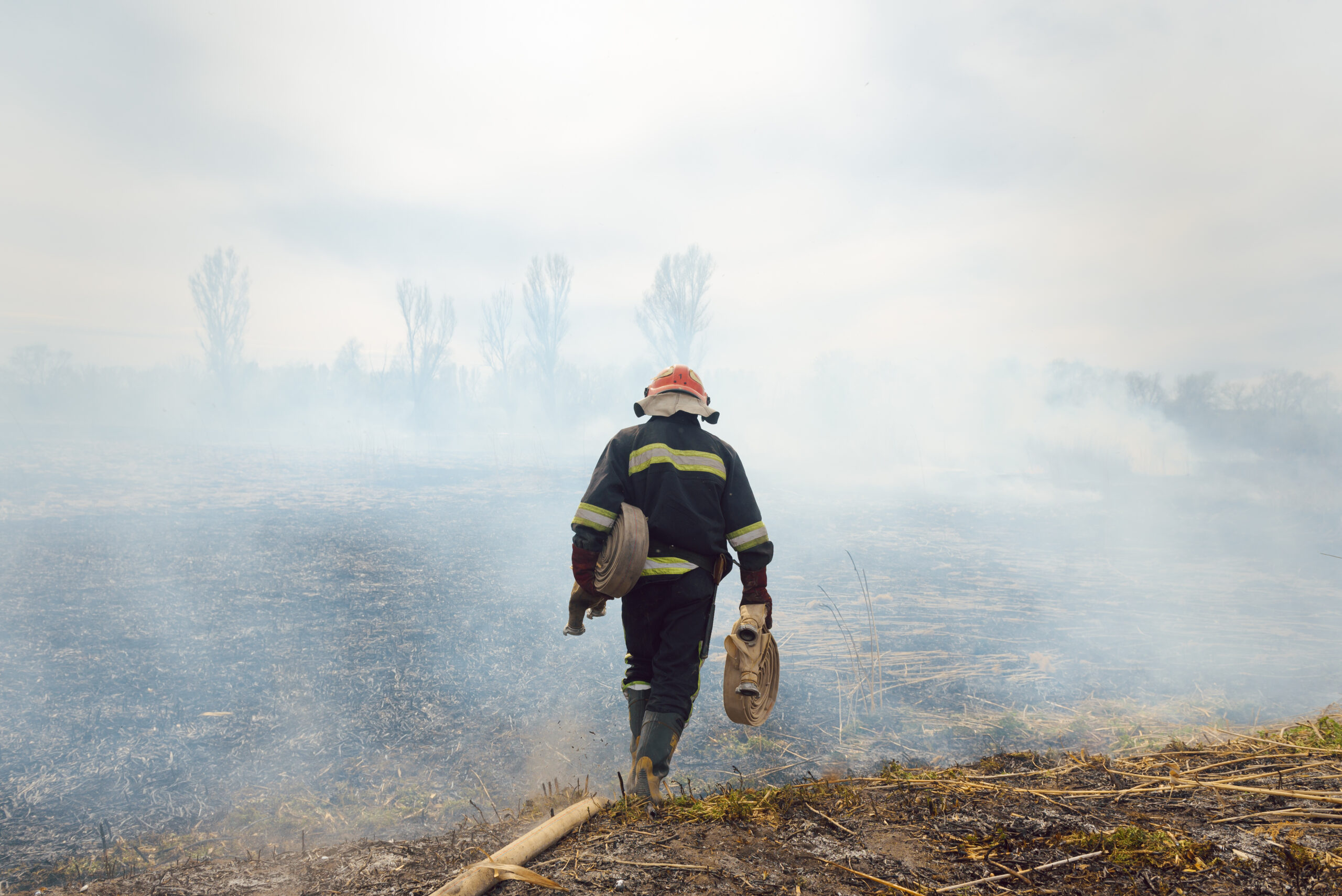Wildfires leave a devastating mark on our landscapes. The recent fires in California are yet another reminder of how these disasters can strip entire regions of their vegetation, destabilizing ecosystems and putting communities at risk of long-term damage. After the flames subside, the work begins to rebuild these areas—not just homes and infrastructure but also the land itself.
One of the greatest threats in the aftermath of wildfires is erosion. Without vegetation to anchor the soil, rain and wind can carry away fertile ground, clog waterways with sediment, and increase the risk of landslides. Tools like wattle netting and sediment socks have proven to be essential assets in erosion control, creating stability and aiding in the recovery of scorched land.

How Wattle Netting and Socks Work in Erosion Control
Wattle netting and sediment socks are simple yet remarkably effective tools for controlling soil erosion. Their primary purpose is to stabilize landscapes and protect soil from being washed away by rain or scattered by strong winds.
- Acting as a sediment barrier
Wattles and sediment socks are filled with materials like straw, wood chips, or synthetic fibers and strategically placed across slopes, waterways, or burned landscapes. These rolls act as barriers, trapping sediment before it can be carried away by runoff.
- Slowing water flow
By reducing the velocity of water moving across bare soil, they help prevent erosion and minimize the risk of sediment clogging nearby rivers, lakes, or drainage systems
- Assisting in vegetation growth
Beyond erosion control, wattles create a micro-environment conducive to regrowth. By keeping soil in place, these tools create a stable foundation for seeds to take root and replenish the area with vegetation.
- Adaptability for challenging terrains
Due to their flexibility, wattle netting and socks can be used in various environments – from steep slopes to uneven, rocky landscapes – making them an invaluable tool for post-wildfire recovery.
Why Wattle Netting and Socks Are Vital for Wildfire Recovery
Erosion is much more than an environmental concern in wildfire-impacted areas – it’s a direct threat to the recovery process. Proper erosion control doesn’t just protect the land; it helps ecosystem restoration and supports the communities that depend on these lands. Wattle netting and socks take up an important function:
- Preventing Secondary Disasters
Burned areas are especially prone to mudslides and landslides during rainy periods. Wattles and sediment socks act as a first line of defense, stabilizing the soil and preventing further devastation.
- Protecting Waterways
Without proper erosion control, runoff can carry mud, ash, and debris into streams and rivers, negatively impacting water quality and aquatic ecosystems. Erosion control barriers minimize sediment runoff, preserving water sources both for wildlife and human communities.
- Speeding up Land Recovery
Stabilized soil is crucial for replanting and regrowth efforts. Wattle netting ensures that seeds and soil remain anchored, creating an environment where vegetation can thrive. Over time, this vegetation takes over as the natural erosion control mechanism.
- Cost-Effective and Scalable
These tools are not only effective but also cost-efficient, making them scalable solutions for widespread deployment in large wildfire-affected areas.
Conwed’s Role in Erosion Control Solutions
At Conwed, we know that tackling erosion is no small feat, especially in areas with rugged terrain and challenging recovery conditions. That’s why we’ve designed high-performance netting solutions that make sediment retention fiber rolls stronger, more flexible, and more effective.
Advanced Durability
Our extruded netting is engineered for resilience, offering outstanding tensile strength, ensuring that the integrity of the wattle or sock is maintained even under heavy rainfall or challenging conditions.
Flexibility Across Applications
Conwed netting offers unmatched flexibility and movement, making it ideal for slopes, hills, and uneven surfaces. No matter how challenging the terrain, our netting performs reliably.
Optimal Containment
The high-quality materials we manufacture help contain filler materials in wattles and socks without tearing or degrading over time. This maximizes the lifespan of erosion control applications while maintaining effectiveness.
Rebuild Stronger with Conwed
Recovering from wildfires is no easy task, but the right tools can make all the difference. Wattle netting and sediment socks play a critical role in erosion control, helping stabilize the land while fostering regrowth and protecting natural resources.
At Conwed, we’re proud to contribute to these efforts with world-class netting solutions and poly thread for socks that meet the standards of even the toughest erosion control challenges. Whether you’re a contractor, environmental agency, or community leader, our team is ready to assist you in selecting the right materials for your project.
To learn more about our premium netting solutions and how they can help in rebuilding wildfire-impacted areas here. Our experienced sales professionals are available to help you find the best solutions for your specific needs—because when it comes to rebuilding landscapes, every detail matters.

